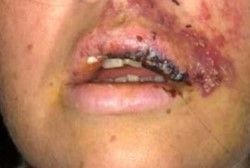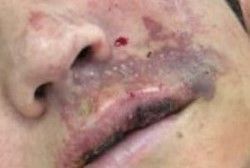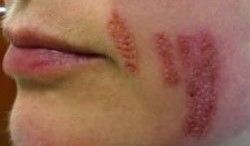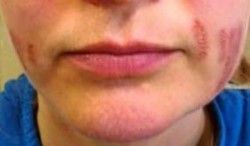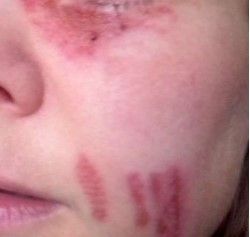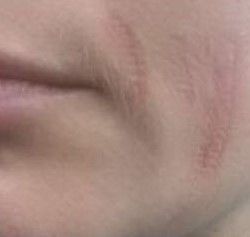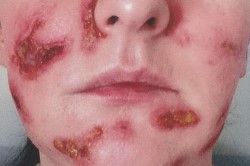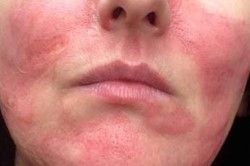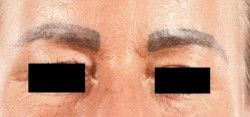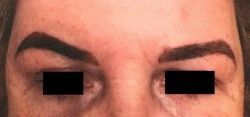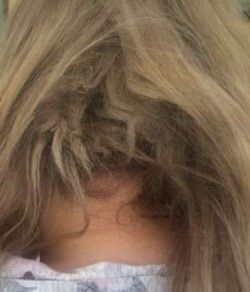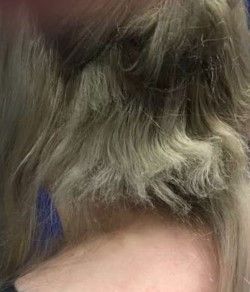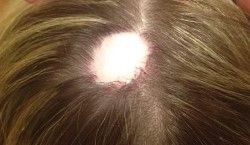The risks with ‘quick fix’ beauty treatments
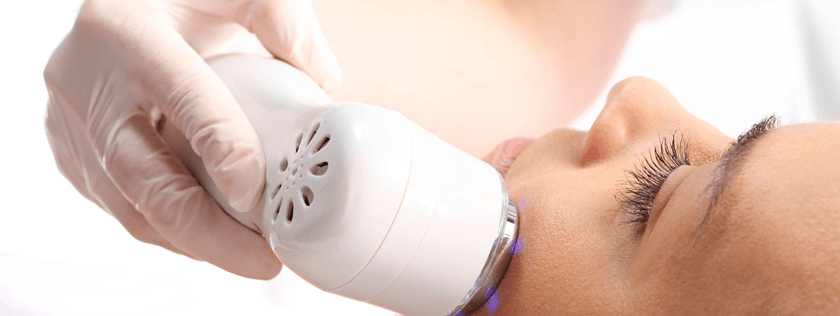
WARNING! Please note that this article contains graphic images of beauty injuries which our clients have agreed to share with others to highlight the dangers.
As more and more of us pack our bags and take to the skies for some summer sunshine, it’s inevitable that our thoughts turn to looking our best. Whether we have over indulged during the pandemic and are looking for the latest diet, or we are trying to look younger and feel fitter, let’s face it: we all want to be our best selves on holiday.
The option of a ‘quick fix’ is very appealing. Having specialised in beauty and hairdressing claims for the last 13 years, there are often new and/or popular treatments in the market place that over promise, and under deliver. Not only do some these treatments fail to hit the mark but they can cause devastating, even life-changing, injuries to the patient.
With the popularity of such treatments seeming to be on the rise, we look at how quick fix beauty treatments can leave damaging after effects.
Here are some example where such injuries have occurred.
Lip Fillers
Lip fillers are injections that add volume to your lips, usually made of synthetic hyaluronic acid (HA) but can also be made of collagen.
This treatment is readily available and only partially regulated. Healthcare Improvement Scotland check up on 'independent clinics' which essentially covers medically qualified practitioners. Unfortunately non-medically qualified practitioners with little or no experience can carry out this treatment. These practitioners have no legal obligation to have insurance or to have undergone suitable training.
What are the risks associated with lip fillers?
There are a number of injuries that can be sustained from this treatment including: infection; scarring; lumps; blocking of blood vessels; lip asymmetry; tissue loss including partial loss of lip; and psychological injuries.
Client A - blocked vessel/widespread infection/tissue loss
Eyelash Extensions
The eyelash extension craze is being kept alive by social media – specifically through TikTok videos showing the satisfying before and after shots. Eyelash extensions can be a safe way to enhance the look of your natural lashes, but only when correctly applied by a trained professional.
What Exactly Are Eyelash Extensions?
Lash extensions are semi-permanent synthetic silk fibres which are applied strand by strand with glue to your natural lashes. The process of application for eye lash extension and false eye lashes is different. False eye lashes, is where a strip or individual eye lashes are applied to skin, lash extensions are applied to the eye lash itself.
What are the risks associated with eye lash extensions?
Without the proper application, information, and after-care, eyelash extensions can cause discomfort, infection, and in some cases, permanent lash loss. More symptoms include:
- Stinging and burning
- Swelling
- Itching
- Pain
- Rash
Unfortunately beauty therapists that provide such treatments are not regulated at all. Prior to attending for an eyelash treatment please make sure your therapist has been trained in the treatment and has suitable insurance cover. Remember to get a patch test for the glue used 48 hours prior to the treatment.
Fibroblast Facial
What is it?
Fibroblast is a non-surgical cosmetic treatment which aims to reduce the volume of excess skin and tightens the skin. This treatment claims to be low risk with minimal downtime and is often regarded as being more affordable than surgery. It is known to be used for crow’s feet, frown lines and around the eye area.
What are the risks associated with Fibroblast Facial?
If carried out negligently this treatment can cause burns to the face and eyes (anaesthetic cream is used during the treatment process and may enter the eyes) and can even lead to permanent scarring. Again, only independent clinics are regulated for these treatments and therefore you may find the practitioner you attend is not regulated, properly trained and does not have insurance.
Client B - burns, scarring, chemical abrasion to eye
Laser Red Vein Therapy
What is it?
Laser Red Vein Therapy is used to treat Facial thread veins, or broken red veins. These are small superficial red, purple or blue veins visible around the nose and across the cheeks and chin. Facial thread veins can be caused by overexposure to the sun, excessive alcohol consumption, hormonal changes, or they may simply be genetic.
The veins can be treated with intense pulse light (IPL) or laser treatment. Again these treatments are marketed as affordable with minimal risk.
What are the risks associated with Laser Red Vein Therapy?
There are several side effects associated with laser red vein therapy, these include:
- Reddening of the skin in the treated area
- Swelling around the treated area
- Hyperpigmentation or loss of pigmentation in the treated area
- Bruising
Laser treatments are extremely dangerous if they go wrong and can cause burns so severe they may require skin grafts.
Client C - Burns, swelling and scarring
Semi Permanent Make-Up/Microblading
HD/tinted brows have been popular over the last decade with consumers looking for long-lasting and semi-permanent brows. One way to achieve this is via semi-permanent make-up or microblading.
What is Microblading?
Semi-permanent make-up (also called micropigmentation) and microblading are types of cosmetic tattooing, but they use different methods of application. They can allow brows to last for up to two years and longer, with regular top ups.
What are the risks associated with microblading?
Due to the long-lasting effects, if something does go wrong, it can take some time to resolve with most clients requiring some painful laser treatment to get the brows removed. In addition to having disfigured and disproportionate brows, the colour of the pigment can go wrong and clients may suffer significant psychological injury.
Client D - Disproportionate/disfiguring/asymmetrical with blue tone
Client E - Disproportionate/disfiguring/asymmetrical brows
Sunbeds
We all know about the risks that over exposure to UV can cause. Yet around one in 10 UK adults still regularly use sunbeds.
According to the NHS, continued exposure to UV rays increases your risk of developing malignant melanoma, the most serious form of skin cancer. Read more here for advice on the health risks associated with UV tanning equipment, and when not to use them. Sunbed providers do have to comply with The Public Health etc. (Scotland) Act 2008 (Sunbed) Regulations 2009.
Hair Colouring treatments
Getting a new “do”, or changing hair colour, should be a relatively straightforward treatment. However the hairdressing industry has no regulation and there are salons and mobile hairdressers that do not have suitable training or a policy of insurance. Popular ombré and balayage treatments resulting in drastic hair colour changes are becoming more and more frequent.
What are the risks associated with hair colouring treatments?
A common misconception is that the most dangerous risk to consumers is an allergic reaction as a result of no patch testing. Whilst we do have lots of cases on such injuries, we find the more common injuries are actually linked to hair damage caused by chemical over-processing or burns to the scalp.
If you are making a significant change to your hair colour, a strand/compatibility test ought to be carried out to establish whether the treatment is suitable by your hairdresser. The time of the colouring treatment and the number of applications of toners/chemical products such as bleach, are important. If a treatment is left on too long it can cause hair breakage and burns to the scalp. The burns can be deep thermal requiring surgery or possible hair transplant procedures.
Client F – Hair breakage from over processing
Client G - burns resulting in permanent bald patch
Regulation of non-surgical cosmetic treatments
In January 2020, the Scottish Government released a Public Consultation Paper for regulation of non-surgical cosmetic treatments. We were approached to provide a response to this paper and we strongly supported regulation of these treatments. On 7th July 2022 the Scottish Government printed their response to the Paper and committed to restricting who can administer dermal fillers treatments and to provide further regulations for treatments that pierce of penetrate the skin. There is also scope for them to consider regulation of other procedures.
Whilst it is welcome news that the Scottish Government are taking these steps, it is not clear how long these will take. So if you are thinking of booking in for any of these ‘quick fix’ treatments before jetting off on holiday – carefully consider the risks, and do your research to make sure you can look your best as safely as possible.
For more information on beauty and hairdressing claims, see beauty-treatment-claims section on our website.
Please note that our ability to assist clients with progressing beauty and hairdressing claims is determined by whether there is suitable insurance cover in place for the salon. Unfortunately lack of suitable insurance cover can be a barrier to accessing justice for clients.
Jennifer Watson
Associate, Specialist in Beauty Treatment Claims
